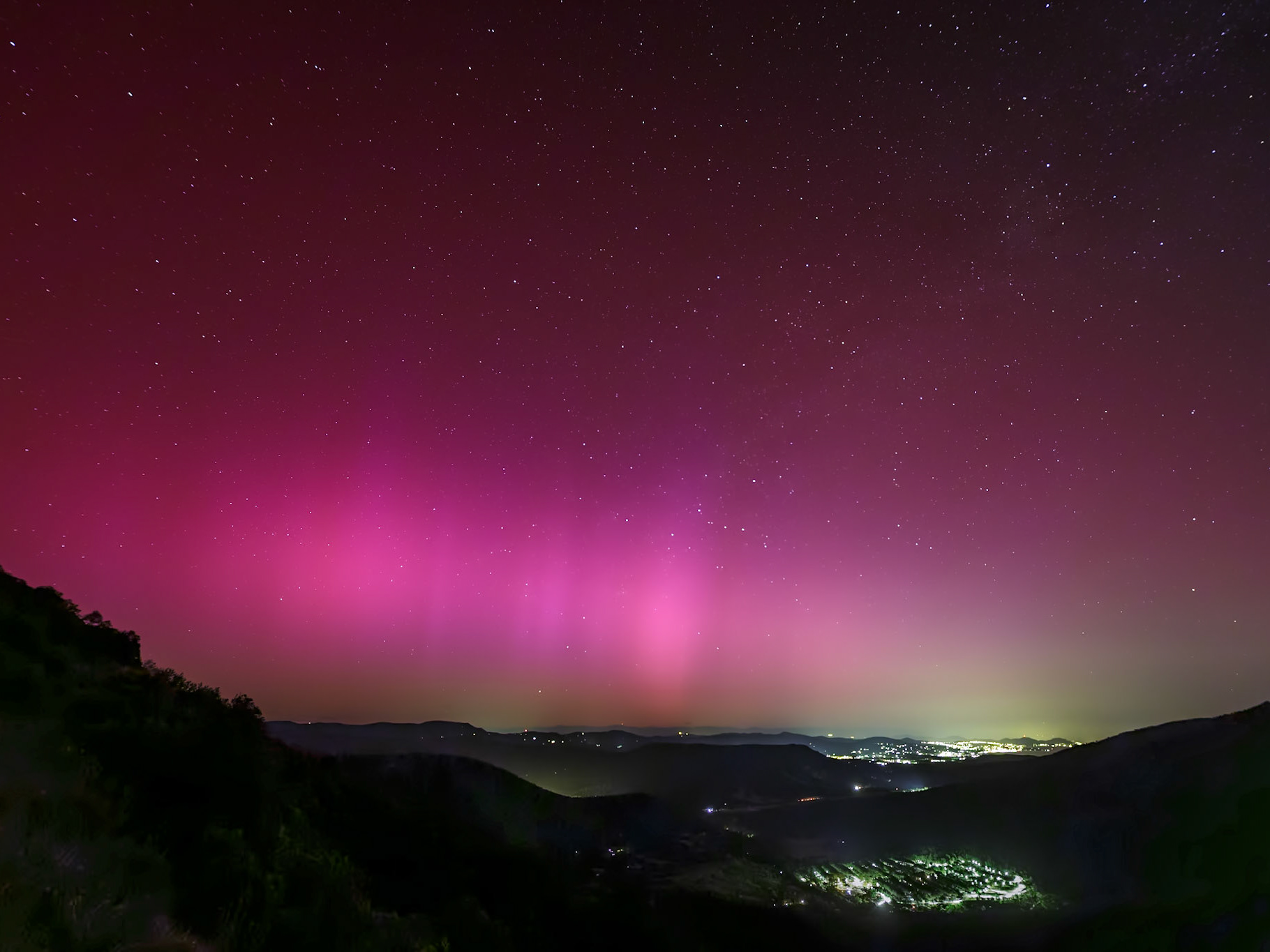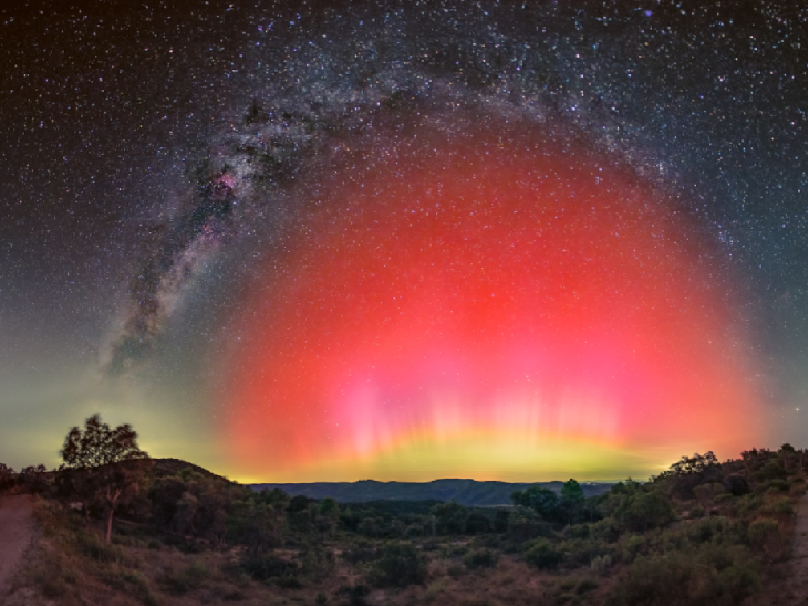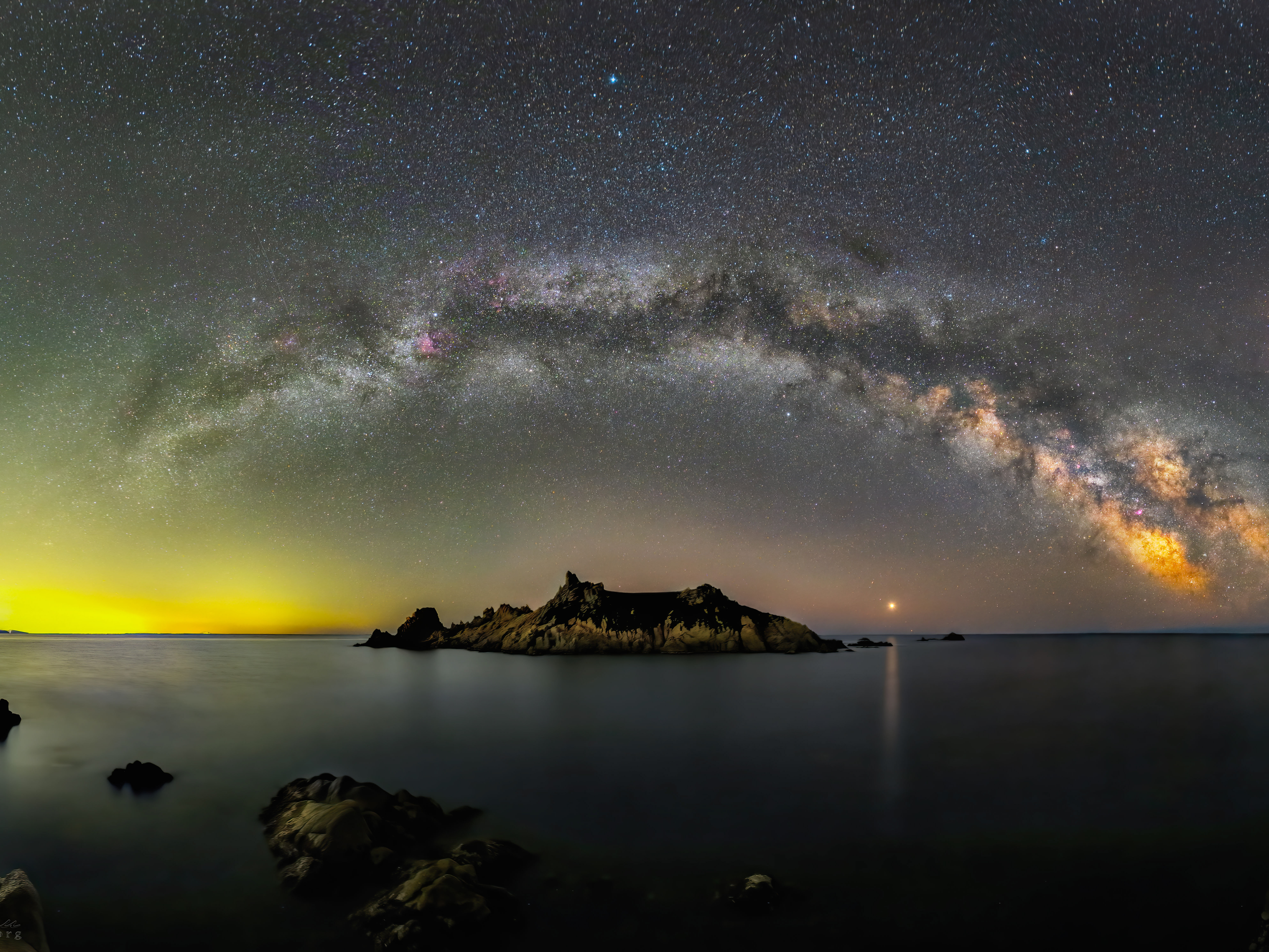Shooting stars, or meteors, are dust in transit at high speed in space which, while crossing the Earth's orbit, will burn up in the upper atmosphere, generating ionization and light due to friction with the air.
Geminids 2023
Great opportunity this year, with a moonless night!
The perfect opportunity to take this long-imagined photo that reveals the radiance of a shower of shooting stars. The Geminids shooting star shower is ideal because we can hope to see up to a hundred shooting stars per hour at peak time!
That said, it's not easy to capture them all with a single camera, especially since I also wanted to capture the very beautiful nebulae in this part of the sky, which involved shooting with dedicated settings for these photos with filter and not very suitable for capturing meteors (duration, sensitivity, filter, etc.). As a result, during the acquisition of these images, I missed some pretty meteors...
That said, it's not easy to capture them all with a single camera, especially since I also wanted to capture the very beautiful nebulae in this part of the sky, which involved shooting with dedicated settings for these photos with filter and not very suitable for capturing meteors (duration, sensitivity, filter, etc.). As a result, during the acquisition of these images, I missed some pretty meteors...
These dusts, the size of small grains of sand, are in fact remains of comets or asteroids whose material was disintegrated following their passage near the sun. When the Earth encounters a cloud formed from this dust, a shower of shooting stars occurs.
At the origin of this shower of shooting stars is the asteroid Phaethon. A recent study published in the scientific journal Astronomy & Astrophysics suggests that the breakup of the celestial body that gave rise to the Geminids could be older than previously thought and have a different cause than the traditional theory of cometary activity ( the “tail” of comets formed as they approach the sun, which is the origin of most shooting star showers). The study thus puts forward the hypothesis of an ejection of significant quantities of material at high speed caused by the rotational instability of the asteroid. Exposed to solar winds, the latter would have started to rotate rapidly on itself 18,000 years ago, to the point that the centrifugal forces exceeded the gravitational forces maintaining the cohesion of the rocks of its core and partially disintegrated the asteroid until until, its mass having been sufficiently reduced, its rotation slows down.
All these shooting stars seem to emanate from a specific point in the sky, the radiant, which depends on each shower of shooting stars. In the case of the Geminids, the radiant is in the constellation Gemini, in the area of the stars Castor and Pollux.
The constellations present in the area of the sky affected by the Geminid meteor shower
Settings & exifs
📷 Canon 6D astromod
📸 TTArtisan 11mm f/2.8 fisheye
🔭️ tripod Leofoto LS-364C + VH-20
🎒 backpack Lowepro Protactic450
🔎 Filter Ha 12nm Astronomik MAX FR
🌄 Foreground: 2 panels landscape orientation| 40sec | f/2.8 | ISO 2500
✨Sky RGB : 3 panels portrait orientation | 13x10sec | f/2.8 | ISO 10000 | 13 images tracked + stacked
✨Sky Ha: 2 panels | 5x180sec | f/2.8 | ISO 6400 | 5 images tracked + stacked
🌠 10sec | f/2.8 | ISO 10000 | 138 images tracked with 35 meteors
🖥️ APP | PI | PS | LR
⚫ Bortle 4
📌 Cap Taillat - Ramatuelle (South of France)
📆 2023/12/15
🕐 1:10 AM UTC





